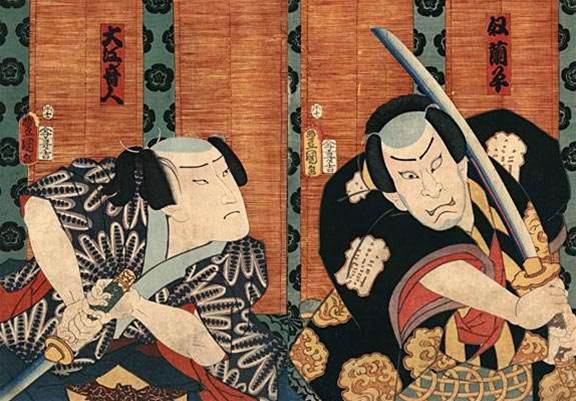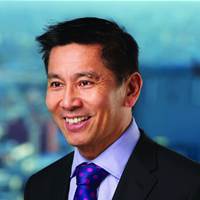Every CIO and IT executive will have felt the stresses and strains of keeping up with workloads.

In a digital age, where we are constantly multitasking, it’s wise to consider where our time is actually going.
I regularly encounter weeks with 300 to 400 pages to read for executive boards or other committees. Unfortunately this preparation time often eats away at my down time - evenings or very early mornings.
I don’t want to use this column to lecture about time management, but I want us to consider the importance of focus.
There is a saying that I learned from a person anchored in empowering teams - ‘staff will respect what I inspect’. It seems the opposite of what I would think empowerment means, but this really works.
Another way I’ve heard this expressed goes back to the Ronald Reagan days as he attempted to end the nuclear arms race. It’s derived from a Russian proverb: "doveryai no proveryai" or “trust but verify”.
A typical CIO has a calendar full of double and sometimes triple bookings. There are management meetings, compliance and steering committees. Then all the staff engagement interactions – in my case I had fortnightly 'Town Halls' along with CIO morning teas with seven to eight non-IT staff members.
Everyone seems to have an agenda, and you often feel that they all ‘want a piece of you’. In such a situation, trust but verify is practical. It is true that in essence you are time poor, but spoilt with choices.
So how do I make this tradeoff? A notion I learned about in Japan - which sounds really exotic but is actually very grounded - is getting to the genba.

Getting to the Genba.
I was privileged to work in Japan as a CIO for four years. It was possibly the hardest role that I ever had, (but that’s another story).
Japan is one of the most traditional countries when it comes to retaining its complex rituals and heritage.
The Japanese have also been responsible for some incredible innovation, for example, the TQM movement that Edward Deming popularised.
I learned while doing my MBA at Macquarie Graduate School the concept of ‘getting to the genba’.
Genba is a Japanese term meaning "the real place." When applying this to the enterprise, it is the notion that to be customer-driven one must go to the customer's genba: to understand the customer's problems and opportunities.
Surely the genba is the place where I should be spending my time?
The customer experience movement
In many organisations in Australia, the new Holy Grail is to create a delightful customer experience.
The question then becomes whether this task or request fits in my priorities?
When it is not explicitly called out as an objective, does it get air time or fall between the cracks?
Yes, we can spend time on digital initiatives and with the help of big data projects provide new customer insights. But is this enough?
One could argue that despite ‘information’ being specifically in our CIO titles, that this is not where we spend our time and taking on a new title is not the answer.
Transform vs build vs run the business.
There is a tradeoff that occurs and we make these decisions every day as we decide what to include in our calendars.
The tradeoffs are not obvious unless we stand back from the day-to-day and challenge ourselves.
For example, I asked my executive assistant at CUA to ask me this in each weekly face-to-face meeting, “David what is your number one for this week?”
This forced me to think about ‘focus’ and what I wanted to achieve. It galvanised me to deprioritise and be ruthless with those marginal meetings, where the value is limited.
I try to ensure everything fits into these three buckets: is this:
- transforming the business,
- building the business or
- running the business?
Projects that are designed to transform have a firm measure: does this activity directly lead to a new product or service that my company sells? If not, then the project falls under ‘build’.
Run the business is not bad, the hygiene effect that having this operate effectively keeps you in your job. That was enough in the old days, but in this day and age we are expected to provide leadership for innovation and transformation initiatives.
I found it was easier to make the tradeoffs by constantly questioning myself. This means that you have to drive the agenda and not let the organisation drive you.
My annual timesheet
Back to my days in Japan: I had an amazing CEO (Newt) that I worked for. He once sprung upon his senior management team a complete breakdown of where each executive had spent the last twelve months.
This was all on the one sheet with large groupings, the categories included:
- staff coaching,
- transformation projects,
- customer meetings,
- internal meetings,
- six sigma meetings.
It was a sheepish group of executives that all reviewed their results and furtively glanced to see how they scored against their peers.
While there was no right answer and Newt never criticised anyone, it was a powerful message.
Needless to say in six months time, when he again revisited the timesheet, the picture looked very different.
What does good look like? Remember the genba!
That’s a tough question and it depends. But I believe this level of reflection will help make you make the right choices.
In my last CIO gig at CUA, I heard a colleague once express a comment “would our owners expect us to focus on this?” That was because being a ‘mutual’ organisation, the CUA's owners are also customers, and so this is an insightful thought.
Having these voices in your head forces you to question your own actions.
That's healthy and doesn’t mean you need pharmaceuticals.




_(20).jpg&h=140&w=231&c=1&s=0)







 iTnews Executive Retreat - Security Leaders Edition
iTnews Executive Retreat - Security Leaders Edition












_(1).jpg&h=140&w=231&c=1&s=0)



